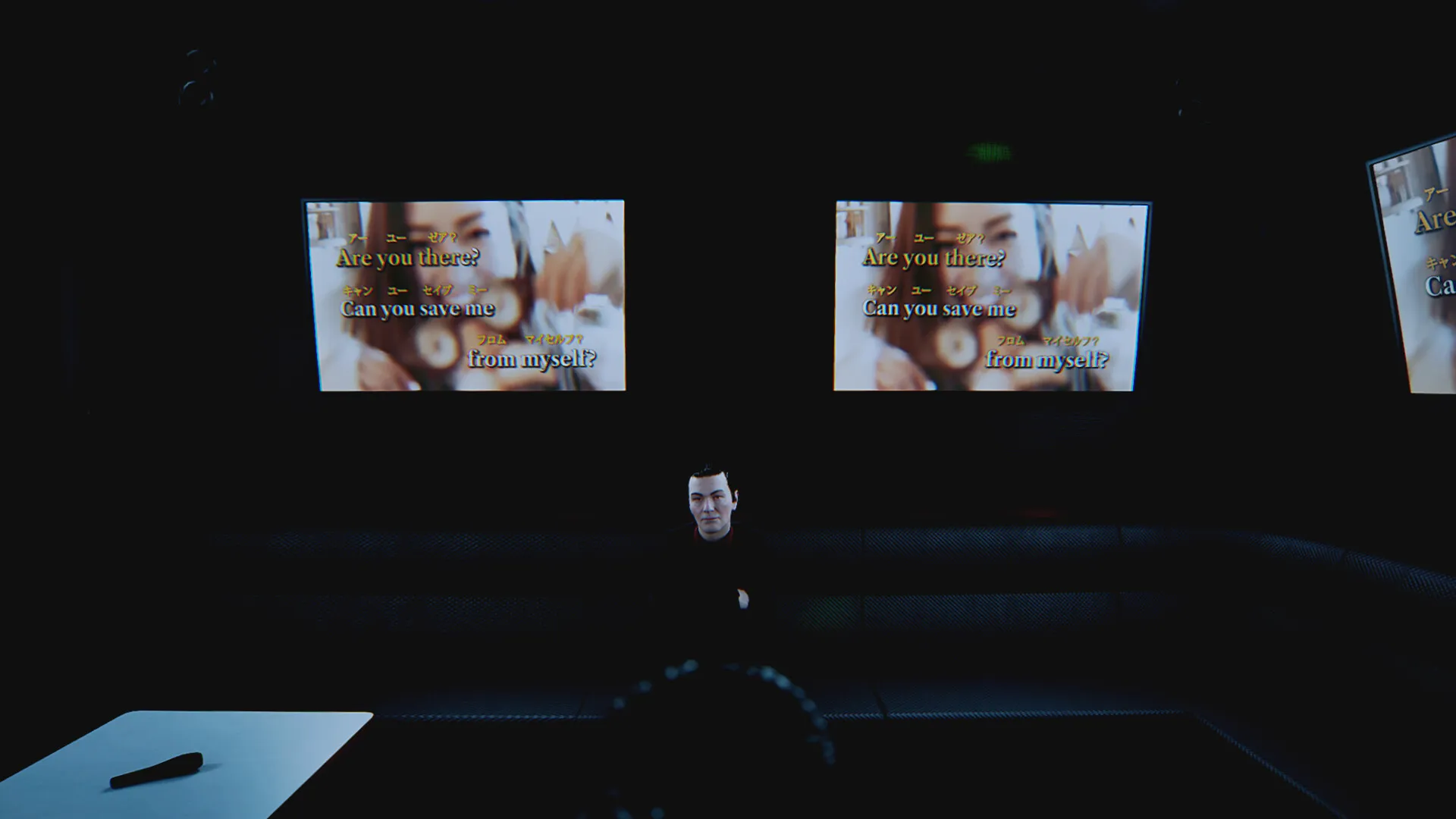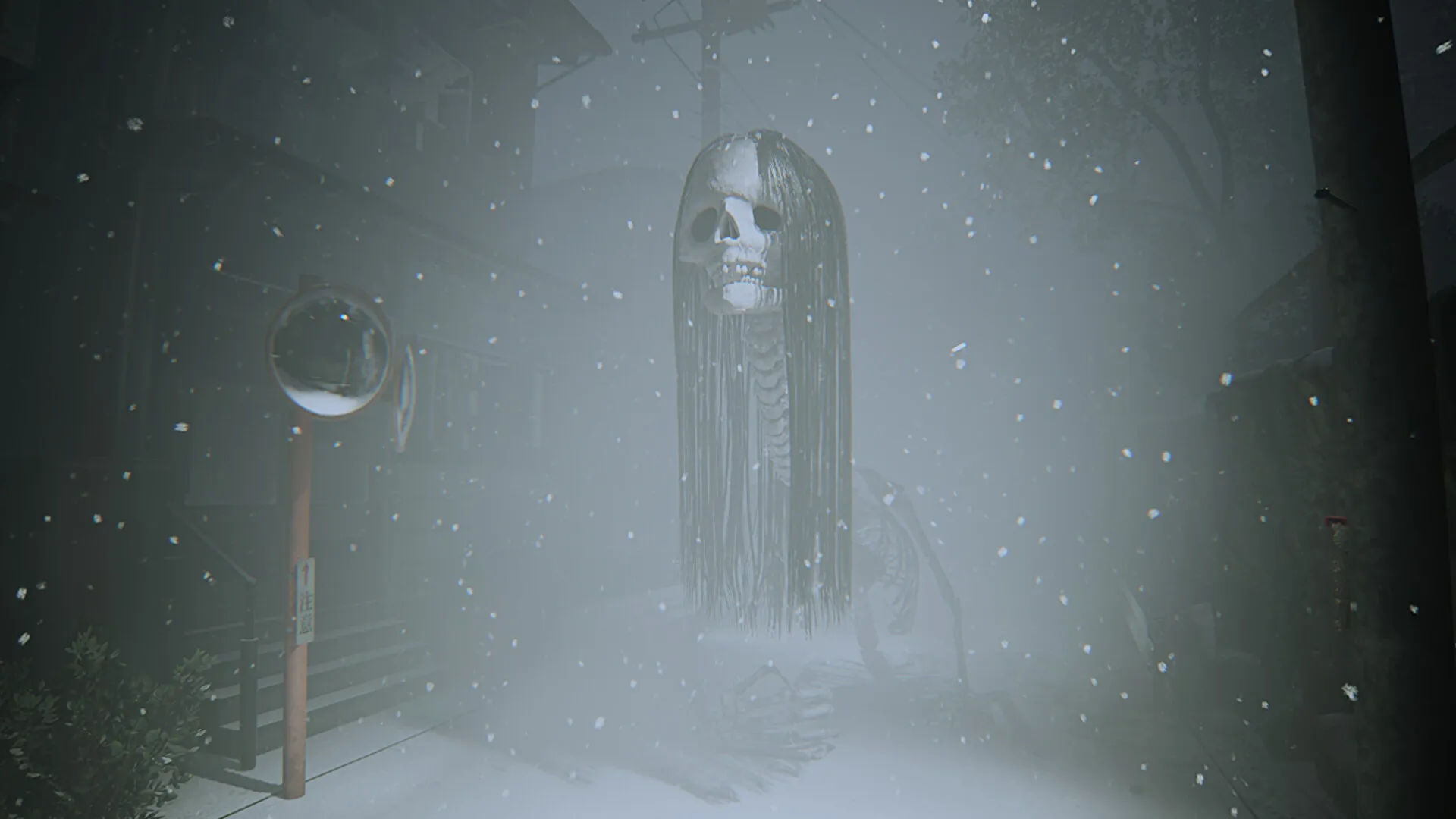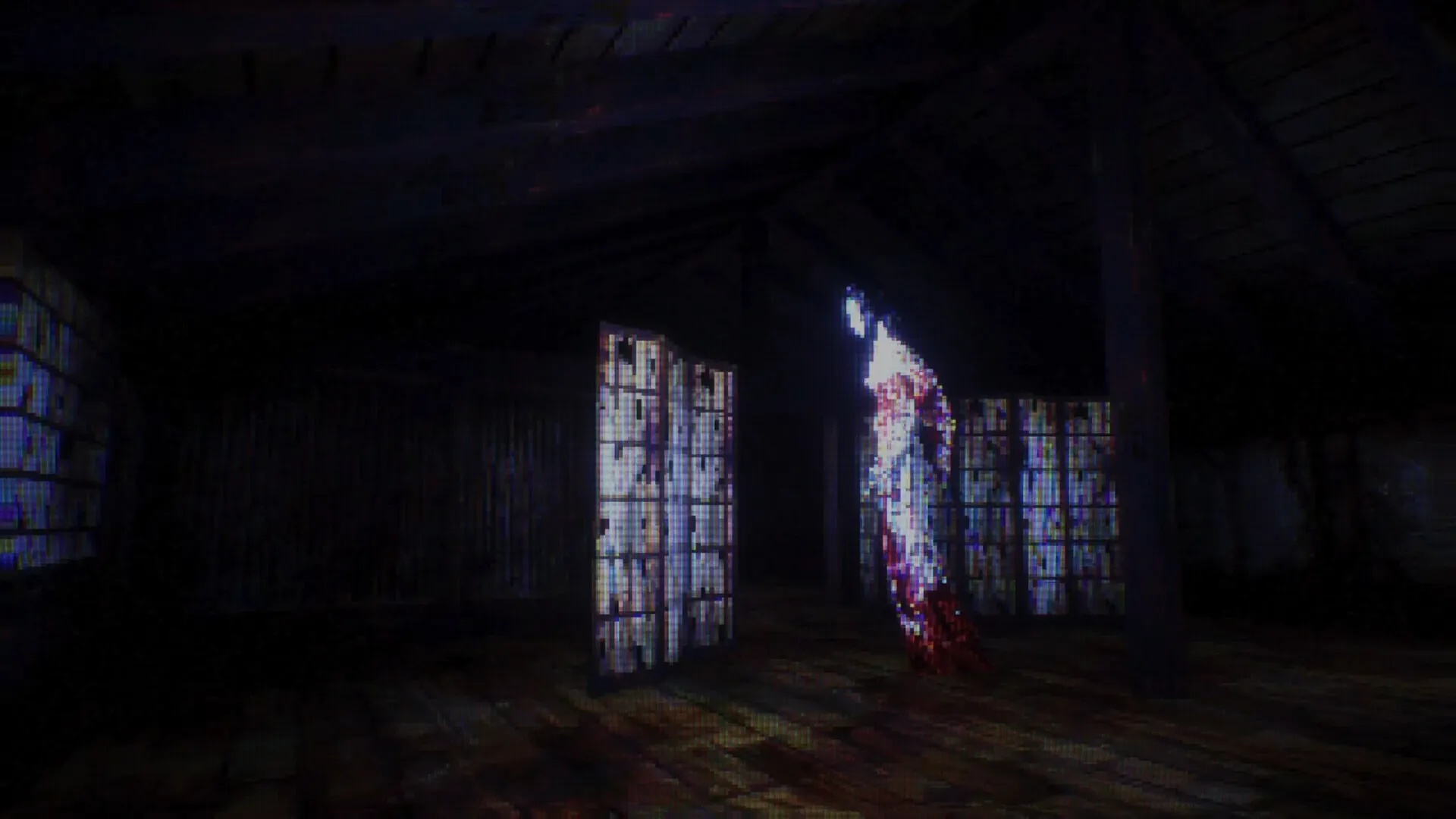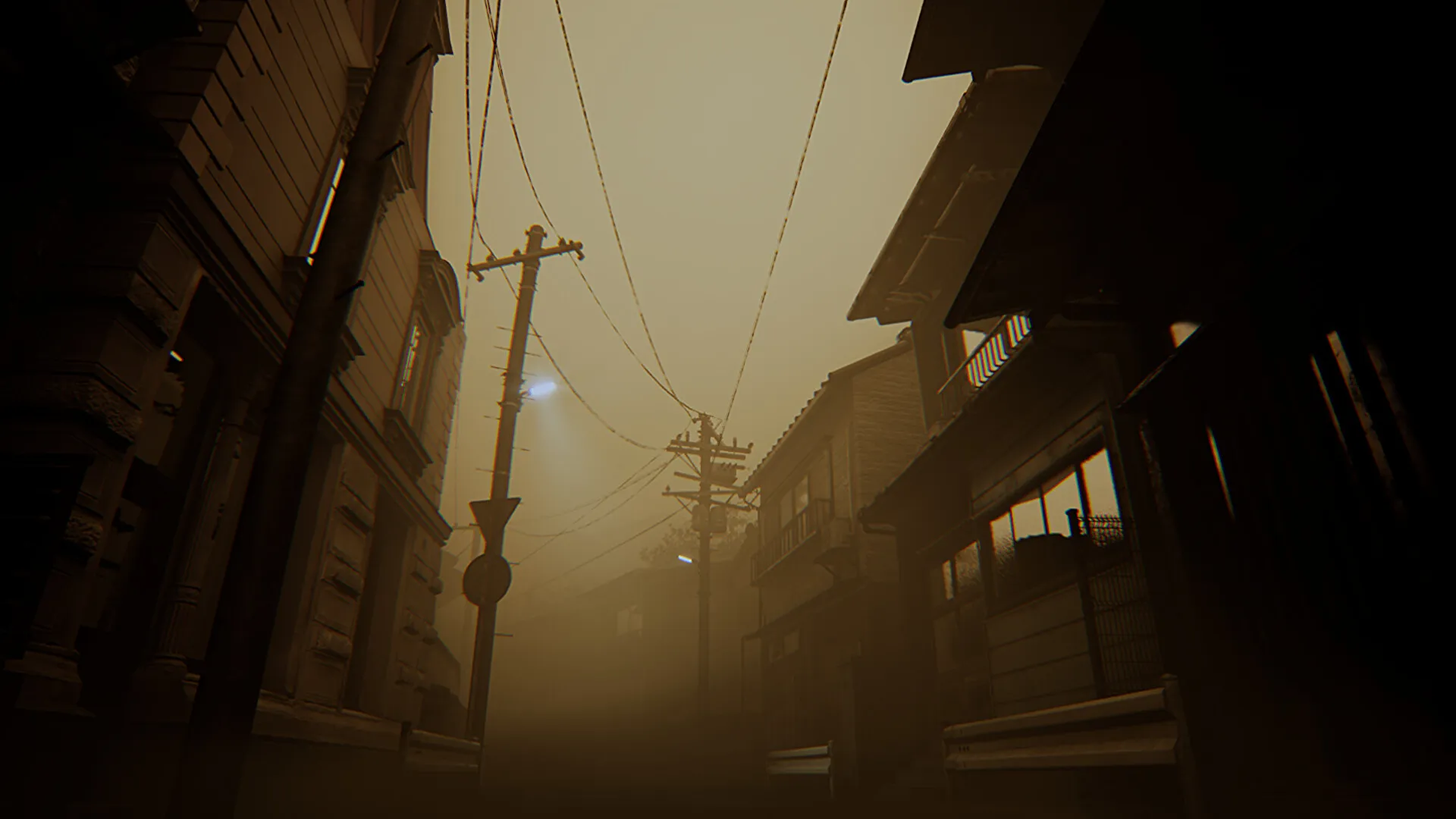BrokenLore: LOW marks the debut installment in a series of brief psychological horror experiences by Serafini Productions. The developer has set an ambitious tone with plans for several episodes, inviting players to explore a world steeped in supernatural elements and cultural lore.
The game places us in the remote Japanese village of Kirisame-mura, where a dense fog and an unsettling silence create a setting filled with mystery and latent dread. Here, players follow Naomi, a determined aspiring pop star, as she meets a producer under circumstances that quickly reveal an undercurrent of danger.
The narrative unfolds in a setting that relies heavily on the atmosphere of a small, isolated village. The fog and quiet streets hint at secrets hidden within the architecture and natural landscape, drawing comparisons to other atmospheric horror experiences in the genre. The game combines a mix of modern, realistic visuals with retro, low-polygon segments, a choice that serves to heighten the contrast between the familiar and the uncanny.
This combination prepares players for a story that weaves together personal ambition with elements drawn from traditional Japanese folklore. The forthcoming analysis in this review will examine the narrative structure, character development, gameplay elements, visual execution, audio design, and thematic concerns, providing an extensive guide for those considering a playthrough of this evocative title.
Story & Narrative Analysis
The narrative centers on Naomi, a driven aspiring pop star who arrives in the remote village of Kirisame-mura for a meeting with a producer. What starts as a standard career opportunity quickly transforms as the atmosphere shifts toward a realm touched by the supernatural.
The game presents a concise plot where everyday ambitions intersect with an otherworldly mystery, creating an experience that holds the player’s attention through its unexpected twists.
Naomi’s character is well-defined by her determination and vulnerability. As she navigates the eerie setting, her initial excitement is gradually undercut by the unsettling discoveries around her.
Interactions with characters such as the reserved producer and a competitive rival add layers to the narrative, introducing moments of tension that heighten the feeling of isolation and uncertainty. These secondary figures contribute subtle hints to the overall atmosphere, challenging Naomi’s perceptions and raising the stakes of her personal quest.
The plot unfolds in a compact format, delivering its narrative within an experience that lasts roughly an hour. This condensed structure forces a careful balance between clear storytelling and moments left open for personal interpretation.
The game uses sudden shifts in tone and pace to keep players alert; for instance, a sudden change in the environment heightens the sense of dread, reminding players of similar techniques used in other atmospheric horror titles.
Cultural elements form an integral part of the story, drawing from Japanese folklore to enrich the overall texture of the narrative. References to traditional creatures, such as the rattling skeleton and other mythic entities, are woven into the environment, lending a symbolic weight that informs both the setting and the characters’ experiences.
The use of environmental clues, such as eerie markings and subtle symbols, stands alongside direct narrative exposition, inviting players to piece together the hidden history of Kirisame-mura on their own.
Gameplay Mechanics & Level Design
The game presents itself as a walking simulator with carefully placed chase segments and item-collection tasks that support the unfolding narrative. Players spend most of their time exploring the fog-laden streets of Kirisame-mura, interrupted at key moments by tense sequences where an unseen force pursues Naomi.
The mechanics remain straightforward; there is no need for complex inventory systems or intricate puzzles, which keeps the focus firmly on storytelling.
The village’s street layout is designed to evoke a sense of isolation. A looping pathway confines the player, enhancing the eerie mood permeating every corner of the environment. Similar titles in the genre use restricted spaces to heighten suspense, and here, the continuous loop reinforces a feeling of entrapment.
Although the setting hints at a richer historical background through subtle details, certain environmental clues remain sparse, leaving much to the player’s imagination regarding the village’s hidden past.
The chase sequences effectively break the calm of exploration, injecting moments of heightened intensity. These segments are structured around quick decision-making and rapid movement, serving to intensify the psychological tension that the game strives to build. The contrast between the slower-paced wandering and sudden bursts of adrenaline maintains a varied rhythm throughout the experience.
Using a single, evolving street loop as the primary stage may limit the variety found in other similar works that incorporate diverse interiors or branching paths. This minimalistic design approach keeps the narrative tightly focused but could benefit from additional interactive elements or more varied settings. Such enhancements might enrich player engagement without sacrificing the concentrated atmosphere the game aims to create.
Visual & Artistic Direction
The game employs a mix of detailed modern graphics alongside retro low-poly segments. This shift in visual presentation distinguishes moments of clarity from times of disorientation. The contrast helps signal transitions between familiar settings and unsettling scenarios, creating a visual rhythm that supports the narrative without relying on complicated mechanics.
The environment is crafted with a heavy use of fog and dim lighting that swallows the village streets. Atmospheric effects such as persistent mist and the gradual onset of darkness set a mood that hints at hidden stories behind every corner. Elements like statues and other symbolic objects serve as silent storytellers, suggesting a mysterious past and deep-rooted cultural lore.
Lighting and color work present some challenges for the player. The design sometimes oscillates between dense, shadowed areas and brief moments of bright exposure. This inconsistency can require adjustments, as players may need to tweak gamma settings to reveal details that otherwise remain obscured. Such shifts in light contribute to the overall sense of uncertainty and heighten moments of tension.
Visual motifs play an important role in reinforcing the game’s themes. A recurring mirror image, for example, is used as a device to reflect shifts in character perception and hint at inner conflicts. These symbols work subtly, offering hints without spelling out every detail, which encourages players to consider the deeper implications of the game’s narrative.
Technical aspects of the presentation show both strengths and limits. Character models and facial expressions are rendered with care, capturing emotions effectively despite budget restrictions. While some technical shortcomings exist, they often add a layer of rawness to the experience that complements the eerie atmosphere and supports the overall artistic vision.
Audio Design & Soundtrack
The ambient soundscape plays a major role in establishing tension throughout the game. The sound design starts with familiar, almost comforting tones that gradually give way to unsettling noises, creating a mood that shifts unexpectedly.
This progression echoes techniques seen in other atmospheric horror titles, where a calm auditory backdrop serves as a precursor to sudden, jarring audio cues that catch players off guard.
Specific moments in the game highlight the careful use of sound effects. For example, the effect of overlapping footsteps during exploration introduces an uncanny layer, suggesting the presence of an unseen force.
Such moments are designed to increase alertness during chase sequences and quieter passages, mirroring the use of similar audio tactics in other narrative-driven horror experiences. Unexpected ambient noises contribute to the sense of isolation and fear, reinforcing the game’s overall unsettling vibe.
The musical score is a significant aspect of the overall experience. The soundtrack features subtle spikes during critical scenes, aligning with narrative shifts and increasing player anxiety at key moments.
The incorporation of traditional Japanese musical elements, combined with modern horror influences, crafts a soundscape that feels both culturally rich and perfectly suited to the game’s eerie setting. This fusion creates an immersive experience that not only sets the mood but also supports the thematic undercurrents of the story.
Audio cues are used effectively as narrative devices, guiding the player’s emotions without overt exposition. The design maintains a consistent level of intensity, although occasional technical quirks—such as duplicated sounds—are noticeable. Overall, the production quality reflects the indie nature of the project, contributing to an experience that is both engaging and thoughtfully executed.
Themes, Symbolism & Overall Impact
BrokenLore: LOW tackles layered ideas about mental unraveling, self-identity conflict, and the strain between personal ambition and harsh reality.
The narrative uses elements of horror to examine internal struggles, presenting Naomi’s experience as one where aspirations confront unsettling truths. Her path is marked by moments that force the player to consider the cost of ambition when faced with disturbing revelations.
Visual motifs play a significant role throughout the game. Reflective surfaces, such as mirrors, serve as a reminder of fragmented identity, urging players to question what they see and feel. The persistent presence of fog and intentionally distorted visuals further obscures the line between the known and the unknown, inviting various interpretations of the story’s deeper meaning. These symbols contribute to a sense of mystery that leaves room for personal reflection on the nature of reality.
Traditional Japanese myth and lore also shape the game’s thematic framework. Supernatural elements drawn from long-standing cultural legends enrich the setting, lending an air of antiquity and depth. This use of folklore grounds the eerie atmosphere in a context that is both familiar and unsettling, enhancing the narrative’s overall texture.
Emotionally, the game is crafted to maintain tension and provoke thought. The interplay of narrative, visuals, and sound creates a consistent mood that encourages both caution and curiosity. The brief format delivers its impact in a focused manner, establishing a foundation for what may follow in future installments of the series.
The Review
BrokenLore: LOW
BrokenLore: LOW delivers an immersive horror experience with atmospheric visuals, a compelling narrative, and thoughtful cultural touches. Its brief runtime and minimalistic gameplay may not satisfy every player, yet it lays a solid foundation for future installments. Overall, it offers a memorable, if concise, journey into psychological horror.
PROS
- Engaging narrative with strong emotional impact
- Atmospheric visuals and sound design
- Effective integration of Japanese folklore
CONS
- Minimal gameplay variety
- Limited exploration opportunities




















































